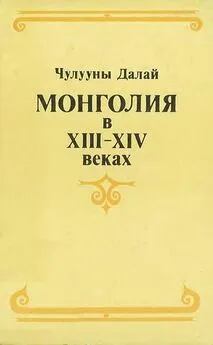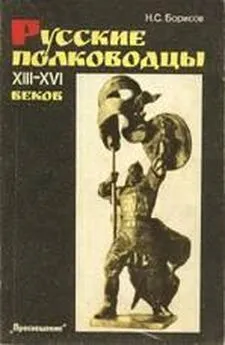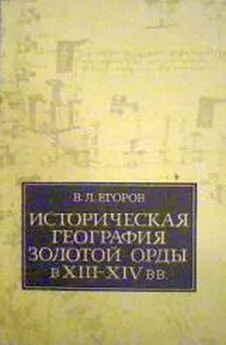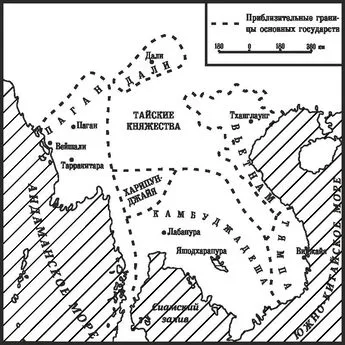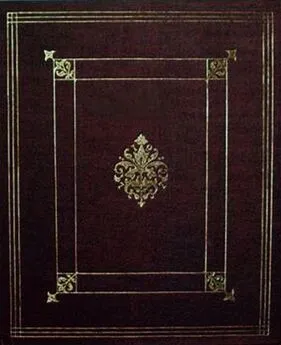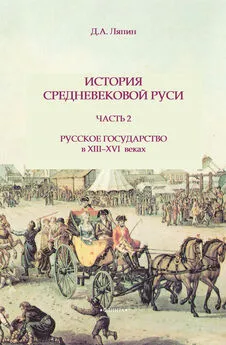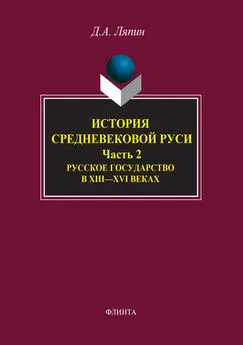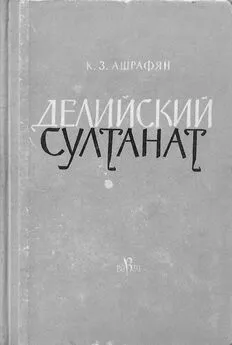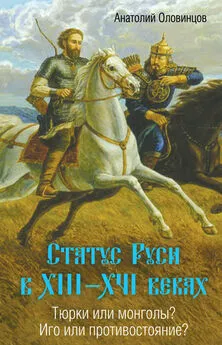Далай Чулууны - Монголия в XIII–XIV веках
- Название:Монголия в XIII–XIV веках
- Автор:
- Жанр:
- Издательство:Наука
- Год:1983
- Город:Москва
- ISBN:нет данных
- Рейтинг:
- Избранное:Добавить в избранное
-
Отзывы:
-
Ваша оценка:
Далай Чулууны - Монголия в XIII–XIV веках краткое содержание
Монголия в XIII–XIV веках - читать онлайн бесплатно полную версию (весь текст целиком)
Интервал:
Закладка:
Свистунова Н. П. Гибель Южносунского государства. — Татаро-монголы в Азии и Европе. Изд. 2-е. М., 1977.
Серов В. М. Поход монголов в Корею 1231–1232 гг. и его последствия. — Татаро-монголы в Азии и Европе. Изд. 2-е. М., 1977.
Таскин В. С . История государства киданей. М., 1979.
Тихвинский С. Л. Татаро-монгольские завоевания в Азии и Европе. — Татаро-монголы в Азии и Европе. Изд. 2-е. М., 1977.
Успенский В. Страна Кукэ-нор или Цинхай с прибавлением краткой истории ойратов и монголов. — ЗРГО. Т. 6, 1880.
Шара туджи. Монгольская летопись XVII века. Своди, текст, пер., введ. и примеч. Н. П. Шастиной. М.—Л., 1957.
Щепетильников Н. М. Архитектура Монголии. М., 1960.
Якубовский А. Ю. Из истории изучения монголов периода XI–XIII вв. — Очерки по истории русского востоковедения. М., 1953.
Aboul GhäzI . Histoire des Mogols et des Tatares, publiee, traduite et anno-tee par le Baron Desmaisons. T. 2, SPB., 1874.
Aziz Ahmad . Mongol Pressure in an Alien Land. — «Central Asian Journal» (CAJ). Vol. 6, 1961.
Вawden C. R. The Mongol Chronicle Altan Toblci. Wiesbaden, 1955.
Blake R. P. and Frye R. N . History of the Nation of the Archers. Cambridge. Mass., 1954.
Bretschneider E. Mediaeval Researches from Eastern Asiatic Sources. Vol. 1–2. L., 1910.
Chavannes E. Inscriptions et pieces de chancellerie chinoise de l'epoque mongole (Extrait du «T'oung Рао», Ser. II. Vol. V et VI). Leide, 1904, 1905.
Gerard Clauson . Turkish and Mongolian Horses, An Etimological Study. — CAJ. Vol. 10. 1965.
Cleaves F. W. The Bodistw-a Cari-a Awatar-un Tayilbur of 1312 by Cosgi Odsir. — Harvard Journal of Asiatic Studies. (HJAS). Vol. 17, 1954.
Cleaves F. W. The Biography of Bayan of the Bärin in the Yiian shih. — HJAS. Vol. 19, 1956.
Cleaves F. M . A Chancellery Practice of the Mongols in the Thirteenth and Fourteenth Centuries. — HJAS. Vol. 14, 1951.
Cleaves F. W . The Lingfi of Aru? of 1340, — HJAS. Vol. 25, 1964–1965.
Cleaves F. W . The Mongolian Documents in the Musee de Teheran — HJAS. Vol. 16, 1953.
Cleaves F. W. The Sino-Mongolian Inscription of 1362 in Memory of Prince Hindu. (HJAS). Vol. 12, 1949.
Cleaves F. W. The Sino-Mongolian Inscription of 1346. — HJAS. Vol. 15, 1952.
Cleaves F. W. The Sino-Mongolian Inscription of 1335 in Memory of Chang Ying Jui. — HJAS. Vol. 13, 1950.
Cleaves F. W. The Sino-Mongolian Inscription of 1338 in Memory of Jigiintei. — HJAS. Vol. 14, 1951.
Cleaves F. W. The Sino-Mongolian Inscription of 1240.— HJAS. Vol. 23, 1960–1961.
Eberhard W. Conquerors and Rulers. Leiden, 1952.
Grousset R . L'empire mongol (Ire phase). P., 1941.
Hambis L. Le chapitre CVII du Yuan ehe. Leiden, 1945.
Hambis L . Le chapitre CVIII du Yuan ehe. Leiden, 1954.
Hammer-Purgstall J. Geschichte der Goldenen Horde. Pesth, 1840.
Hammer-Purgstall J. Geschichte der Ilkhanes, Darmstadt, 1842.
Heissig W. Die Familien-und Kirchengeschichtsschreibung der Mongolen, Bd 1–2. Wiesbaden, 1959, 1965.
Heissig W. A Lost Civilization. The Mongols Rediscovered. L., 1966.
Howort'h H. History of the Mongols, Pt. 1. L., 1876.
Huth G. Geschichte des Buddhismus in der Mongolei. Bd 1–2. Strassbourg, 1896.
Jаgchid S. and Bawden C. R. Some Notes on the Horse-Policy of the Yuan Dynasty. — CAJ. Vol. 10, 1965.
Juvaini 'Ata-Malik. The History of the World-Conqueror by 'Ala-ad-Din 'Ata-Malik Juvaini. Translated from the text of Mirza Muhammad' Qazvini by J. A. Boyle. Pt. 1–2, Cambridge, Mass., 1958.
Kara K. L'inscription mongole d'Arur prince de Tunnan (1340). — «Acta Orientalia». T. 17, 1964.
Lattimore O . Studies in Frontier History. N. Y., 1962.
Munkuyev N. Ts. A New Mongolian P'ai-ts'u from Simferopol. — «Acta Orientalia». 1977, t. 31, Fasc. 2.
Munkuyev N. Ts. Two Mongolian Printed Fragments from Khara-khoto. — Mongolian Studies. Budapest, 1972.
D'Ohssоn K. Histoire des Mongols depuis Tchinguiz-khan jusqu'a Timour Bey ou Tamerlan, La Haye et Amsterdam. T. 1–4, 1834–1835.
Pelliоt P. Les Mongols et la Papaute. Extrait de la Revue de L'Orient Chretien, 3-e Ser. T. III (XXIII), № 1, 2 (1922–1923). P. 1923.
Pelliоt P. Histoire secrete des Mongols, Restitution du texte mongol et tradition frangaise des chapitres I a VI. Oevres posthumes I. P., 1949.
Pelliоt P . Notes on Marco Polo 1. Ouvrage posthume. P., 1959.
Pelliоt P. et Hambis L. Histoire des campagnes de Gengis Khan. T. I. Leiden, 1951.
Phillips E. D. The Mongols. L., 1969.
Prawdin M. The Mongols Empire, Its Rise and Legacy. L., 1953.
Rachewillz I. de. The Hsi-yu lu by Yeh-lü Ch'u-ts'ai. Monumenta Serica. Vol. XXI, 1962.
Rachewillz I. de. Personnel and Personalities in North China in the Early Mongol Period. — Journal of the Economic and Social History of the Orient. Vol. IX, 1966.
Rachewiltz I. de. Papal Envoys to the Great Khans. L., 1971. Ratchnevsky P. Un code des Yuan. P., 1937.
Reishauer E. O., Fairbank J. K. East Asia, The Great Tradition. Boston, 1960.
Rосkhill W. W. The Journey of William of Rubruck. L., 1900.
Schmidt I. J. Geschichte der Ost-Mongolen und ihres Fürstenhauses. SPB. 1829.
Schurmann H. F. The Economic Structure of the Yüan Dynasty. Cambridge (Mass.), 1956.
Schurmann H. F. Mongolian Tributary Practices of the Thirteenth Century. — HJAS. Vol. 19, 1956.
Serruys H. The Mongols in China during the Hung-u Period (1368–1398). Bruxelles, 1959.
Vernadsky G. The Scope and Contents of Chingis Khan's Yasa. — HJAS. Vol. 3, 1938.
Wallis Вudge E. A. The Monks of Kubläi Khan, Emperor of China. L., 1928.
Summary
Beginning from the Middle Ages the Mongols, who perhaps are known do the reader best of all the nomads, have been one of the most popular and productive topics for historians and writers of the world. Certainly it is explained by aggressive wars of Genghis Khan and his successors in the 13th–14th centuries A. D. which shook the world of those times. The bulk of this great a number of works is devoted to Genghis Khan and other Mongol khaghans, noyans and their military campaigns against remote countries, but to the Mongols as a genuine people.
In particular, numerous works on the Yiian dynasty (1260–1368), often treat the history of the Mongols of that period as a history of China. Both old and modern Chinese literatures regard the Yiian dynasty as one of the Chinese dynasties. Nowadays some of the Chinese historians have even come to proclaiming all great khans of the Mongol Empire «Chinese emperors out of national minorities», who accomplished «he first great unification (ta t'ungyi)» of the — empire since the Han and T'ang. In fact, as is well known. China of that period was deprived of its sovereignty. The country was ruled by the alien Mongol dynasty founded in 1206 by Genghis Khan and which by 1271 became known as Yiian and was part of Mongol empire.
As is evident from the title this work attempts to give the history of Mongolia proper of that period which was the main part of the Mongolian Yiian Empire, and whose vast territory stretched from the Hingan mountain ridge in the east to the Altai mountains in the West.
The introductory part of the work characterizes the sources used by the author. Most of them are originally Chinese. Undoubtedly the Yiian shih, compiled in 1370, is the most important source for a student of Mongol history. In this connection I would like to note that this bulky work consisting of 210 chapters was completely translated into Mongolian in 1917–1928 by Cimidiin Demcig-Dorje (1863–1932) known in Mongolia under his literary name C. Dan-da.
The first chapter concentrates attention on the political events which took place immediately after the death of Mongol Möngke khaghan (1251–1259). It analyses in detail the struggle for the throne between Arik Böge and Kublai, which in 1264 ended in the latter's victory. As is known, this struggle began in 1260 soon after the Great quriltai convoked by Kublai in Kaiping at which he proclaimed himself great khan of the Mongol Empire simultaneously. With that gathered by his brother Arik Böge in Karakorum. It should be noted here that it was not a struggle for the throne of an ulus khan ruling a part of the empire but for that of the great khan of the whole Mongol Empire founded by Genghis Khan.
The question of the administrative structure of Mongolia in the Yüan period is discussed in the corresponding chapter. This part of the work considers the central bodies of States power in the Mongol Yüan Empire, but attention is accented mainly on administrating of Mongolia proper, which is characterized as a vicegerency where the State power was represented by the heir of the khaghan of the empire, obliged to constantly live in Karakorum. Special paragraph deals with the economic situation in Mongolia proper and the living conditions of the Mongols in their homeland.
One of the chapters of the work studies the economy and social relations of the Mongols in the 13th–14th centuries. As is known, the Mongols in that period, as well as before, were engaged in extensive cattle-breeding. The Mongol arats roamed from place to place by small groups of ayils (households) within the limits of a strictly fixed territory, included into the domain of a feudal lord. The arats were registered to his lands and had no right to leave him. In that period hunting still played an important part in the economy. At the same time, agriculture, handicraft and commerce began to develop. Economic decline of Mongolia proper in that period is accounted for the feudal wars which burst out from time to time on its territory almost during the whole Yüan rule.
The corresponding sections deal with the fall of the Yüan dynasty as a result of peasant uprisings in China and the flight of the Mongol court first to Yinch'ang in 1368 and then to Karakorum in 1378, as well as the struggle of the Mongol great khans Togon Temür (1333–1370), Ayusiridara' (1370–1378) and Toquz Temür (1378–1388) against the Chinese Ming dynasty. In this connection the work describes in detail the Mongol-Chinese relations during the post-Yüan period.
The work ends in a chapter devoted to culture and religious beliefs of the-Mongols in the 13th–14th centuries.
In this study on the Mongol history, the author makes an attempt to use as many new data, especially from Chinese sources, as possible and at the same time to adequately solve its problems, but it is up to the reader to decide, whether he has succeeded or not. Any criticism on the side of students of the Mongol history will be accepted with due consideration.
Читать дальшеИнтервал:
Закладка:
